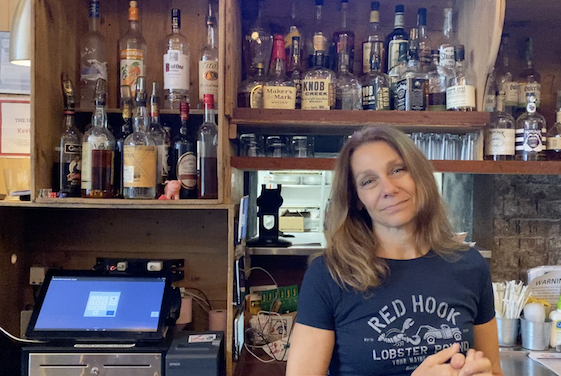In October, Branden McRill and his team at Philadelphia’s Fine-Drawn Hospitalitylaunched The Commons, a virtual food hall that allows diners to order from the group’s restaurants as well as three virtual concepts.
From McRill’s earliest conversations with staff, The Commons took about six weeks to open. After brainstorming and determining the concepts, management coordinated with design professionals on branding, packaging, photography, and website design, the biggest upfront costs, according to McRill. Meanwhile, his kitchen team started recipe testing and the work of reconfiguring purchasing and receiving, storage, and hot lines.?
Virtual concepts need to make sense within the context of existing operations, so they don’t interrupt the flow of service, require added labor or new equipment, or drastically change your mise-en-place. But they’re also a low-barrier way to test new ideas and cook food you’re excited about.
Contributed by Caroline Hatchett
“The benefit, first and foremost, is that you get to try a new concept,” says Bill Kim of Chicago’s Urban Belly. “I love making pizza, but did I ever think I was ever going to run a pizza restaurant? No. But we’ve sold 350 pizzas in the last five days.”
Rather than reverse engineering dishes to stand-up to delivery, Kim chose foods that already traveled well: pizza, chicken sandwiches tucked into foil bags, and ramen with the noodles and accoutrements packed separately from the broth for easy at-home reassembly.
And he cross-utilizes as much product and prep as possible: “Michael Jordan’s serves garlic bread and burgers. Why wouldn’t I put those in a virtual kitchen?” he says. “Be flexible. Sneak mise into your virtual kitchen, and don’t do extra work. Don’t create a new vinaigrette. The drivers won’t know! No one will know.”

Get staff invested
This winter, New York’s Red Hook Lobster Pound launched a virtual iteration of Bronx-based City Tamale. Susan Povich is the owner of Red Hook Lobster Pound, as well as an investor in the tamale business, and she saw an opportunity to bring authentic Mexican food to Red Hook, expand City Tamale’s customer base, and increase sales at her flagship restaurant.
But the concept also made sense for her team. “Ninety percent of our kitchen comes from Mexico, and this was the perfect way to make them feel like they can showcase their culture,” says Cyndi Stanimirov, the restaurant’s executive chef and general manager. “All summer long, they’re taking lobsters in and out of a pot, adding Old Bay and butter on repeat. It’s reinvigorated them.”
Timing, packaging and pick-up
Working to cross-utilize as much product as possible and stick below 27% food costs, Stanimirov and her team developed a full menu to complement the tamales. They now serve chicharones and salsa verde, esquites, chiles rellenos, black bean soup, posole, a Baja burger, shrimp Veracruz and more.
“When you’re figuring out a concept, see who you have in the kitchen. What’s the culture? When they make staff meal, what do they lean towards?” she says. “We were eating chilaquiles for staff meal all summer long, and now they’re on the menu.”
The only significant change to Red Hook Lobster Pound’s line was adding a perforated hotel pan steamer to the stovetop to cook the tamales. But Stanimirov says their station set-up isn’t perfect, and on busy nights, they often run into logistical challenges. “You can only prepare so much — until you’re in it, you just don’t know,” she says.
One of the biggest adjustments for restaurants when executing delivery is the cadence of receiving orders, cooking, packing and handing off meals. Leahy assumed delivery would follow the rhythm of dine-in customers but found that online orders start on the earlier side, at 5 p.m., and continue unabated until 7 p.m. He also had to learn to expedite from four different tablets — one for each of the delivery apps — and properly bag up food.
“We did a lot of research into packaging and how we should stack food in the bags,” says Leahy, whose team arranges to-go boxes by weight, height, and heat. “If you put the potato salad by the chicken, it warms the former. You have be methodical.”
Ideally, online orders should take no more than 10 to 15 minutes to cook, pack and double check, according to Kim. Weather also plays a factor. When it’s raining and cold, Kim says dine-in business drops off and delivery increases 50%, and during inclement weather, there are often fewer drivers and slower travel times.
Another unexpected challenge for Kim was directing drivers to the correct pick-up spot rather than the guest entrance of Michael Jordan’s. “Drivers are confused. You need signage indicating it’s a ghost kitchen,” he says.
This story was originally published by Plate, a sister publication of HOTELS.
